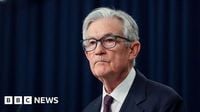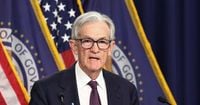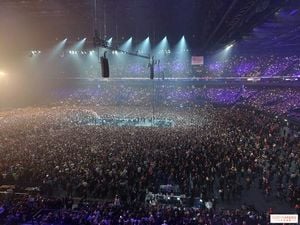On May 7, 2025, the Federal Reserve announced it would maintain its benchmark interest rate in the range of 4.25% to 4.50%, resisting pressure from President Donald Trump to lower U.S. borrowing costs. This decision comes amid growing concerns about the economic impact of Trump's tariffs, which have injected significant uncertainty into the market.
Federal Reserve Chair Jerome Powell acknowledged the risks associated with Trump's trade policies, stating, "The risks of higher unemployment and higher inflation have risen. But they haven’t materialized yet." Powell emphasized that while the current economic indicators show resilience, the Fed is adopting a cautious approach due to the unpredictable nature of the tariffs.
The Fed's decision marks the third consecutive meeting without a change in rates, reflecting a careful wait-and-see strategy as policymakers assess the fallout from Trump's tariffs on imports, particularly from China, which have seen duties of at least 145%. Powell explained that the tariffs create a complex situation, complicating the Fed's dual mandate to maintain stable prices and full employment.
"It’s really not at all clear what it is we should do," Powell said during a press conference. He noted that the Fed's ability to respond effectively hinges on the evolving economic landscape shaped by these tariffs. The uncertainty surrounding the economic outlook has increased, with Powell stating, "The scope, the scale, the persistence of those effects are very, very uncertain." This ambiguity makes it challenging for the Fed to determine its next steps.
Despite the risks, Powell also pointed out that the economy is currently performing well, with job growth remaining strong and the stock market recovering from previous declines. However, the U.S. economy did experience a contraction in the first quarter of 2025, largely attributed to businesses rushing to import goods ahead of the tariff implementation. This rush led to inflated import numbers that skewed GDP calculations, complicating the Fed's assessment of underlying economic health.
Powell's comments reflect a broader tension between the Fed and the Trump administration, which has consistently pushed for lower interest rates to stimulate the economy. Trump has openly criticized Powell, labeling him as "a major loser" for not acting quickly enough to cut rates. In a recent interview, Trump stated, "You are not supposed to criticize the Fed; you are supposed to let him do his own thing. But I know much more than he does about interest rates, believe me."
The Fed's cautious stance is further complicated by the ongoing trade negotiations between the U.S. and China, which are set to take place this week. Powell indicated that these talks could significantly alter the economic landscape, saying, "Usually, things clarify and the appropriate direction becomes clear. Right now it’s very hard to say what that would be."
Economists are forecasting that the tariffs could lead to higher inflation later this year, which would challenge the Fed's ability to maintain its dual mandate. Ashish Shah, chief investment officer of public investing at Goldman Sachs Asset Management, noted, "For the time being, the Fed remains in a holding pattern as it waits for uncertainty to clear," emphasizing the need for clarity in economic data before any decisive action is taken.
As the Fed navigates these turbulent waters, it remains committed to monitoring economic indicators closely. Powell stated, "The current stance of monetary policy leaves us well positioned to respond in a timely way to potential economic developments." This suggests that the Fed is prepared to act swiftly if necessary, but only when the economic signals are clearer.
Meanwhile, the broader economic outlook remains uncertain. The Fed's Beige Book, which compiles anecdotal information from business contacts, has indicated concerns about falling demand and rising prices. Powell noted, "Businesses and households are concerned ... and postponing economic decisions of various kinds. If that continues and nothing happens to alleviate those concerns, you would expect that to show up in economic data."
The Fed's decision to keep rates steady comes as other central banks, such as the European Central Bank and the Bank of England, have begun to cut rates in response to similar economic pressures. The Fed's cautious approach stands in stark contrast to Trump's optimistic rhetoric, who recently claimed, "I think we’re going to have the greatest economy in the history of our country."
As the economic landscape continues to evolve, the Fed's path forward will depend heavily on the outcomes of ongoing trade negotiations and the long-term effects of Trump's tariffs. The central bank's ability to respond effectively will be crucial in navigating the challenges posed by rising inflation and potential unemployment. With the stakes high, the coming months will be pivotal in shaping both the U.S. economy and the Fed's monetary policy.





